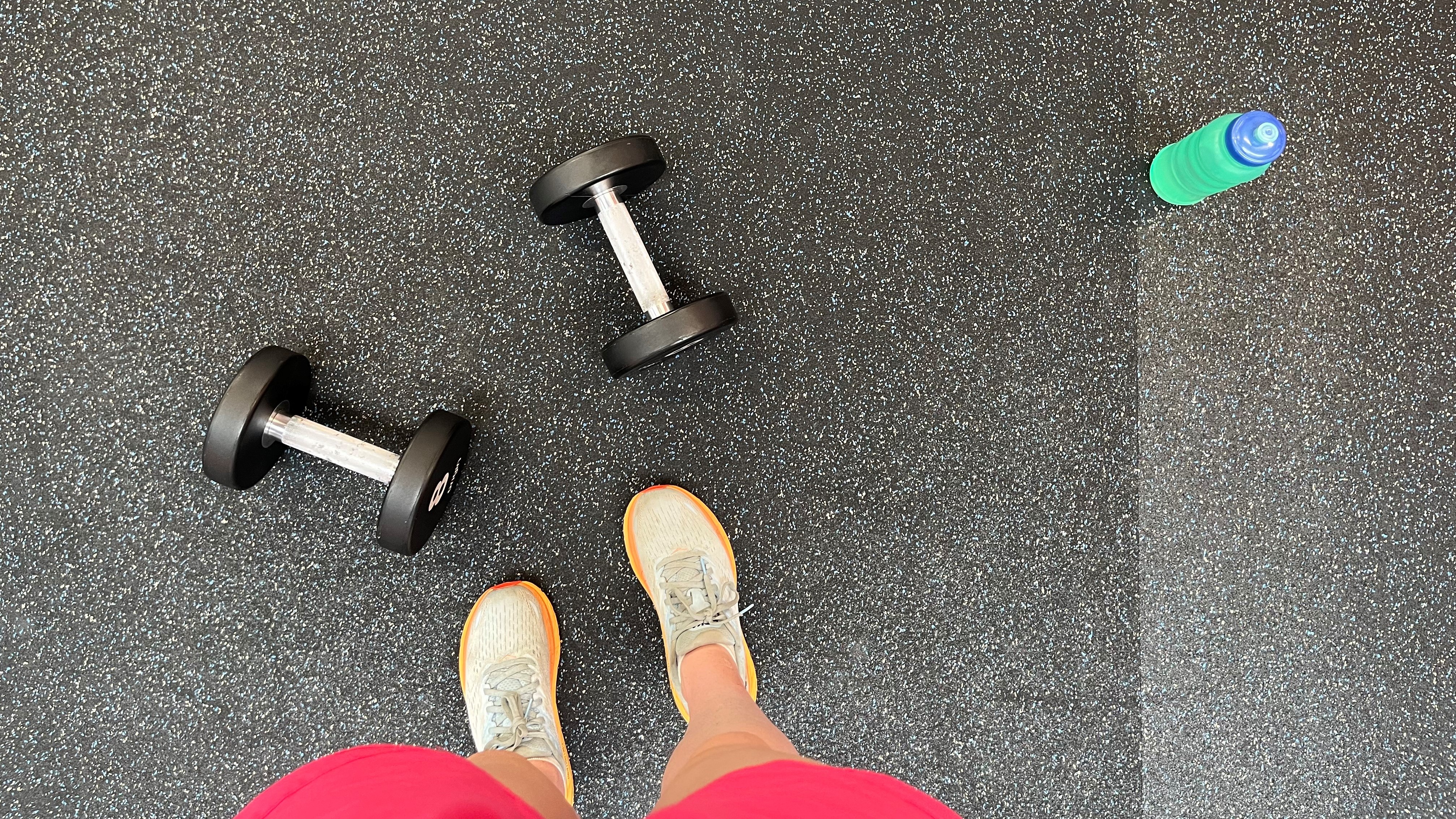
I like ab workouts that aren't too long, don't need a lot of equipment, and has a bit more variety than endless sit-ups. But so many routines follow the same pattern of crunches, Russian twists, and a few sit-up variations.
That's why I knew I wanted to try this 10-minute standing abs workout as soon as I saw it. Designed by personal trainer Roxanne Russell, there are just 10 moves in all, so you do each one for 45 seconds and take a 15-second rest between. That's it.
You only need some dumbbells to get started (although I needed several pairs at different weights, so investing in a pair of the best adjustable dumbbells might be useful) and a bit of floorspace to give it a go.
It's crucial to get the technique just right to get the most from your abs workouts and save you arching into your lower back. So, watch Russell's video for demonstrations of the 10 moves, and a handy exercise timer to help you keep track of your progress.
Russell's routine is an example of functional strength training. This sounds complex, but it really means just preparing and strengthening your body for everyday life by working the muscles involved in daily tasks, like carrying groceries.
Watch Roxanne Russell's 10-move core workout
As the focus here is on your core, Russell says you don't want a dumbbell so heavy that your arms and shoulders start to take the weight. A light or medium pair should do the trick (if you need some extra guidance, our feature on "What dumbbell weights should I use?" is here to lend a helping hand).
I tried this workout at the gym, grabbing a moderate set of dumbbells I thought would strike a balance between being challenging enough to lift and allowing me to maintain perfect form.
However, during the second exercise I realised the reps seemed too easy and I wasn't being challenged enough. So, I grabbed a slightly heavier set and then alternated between the two weights depending on the difficulty of the exercise.
Why is functional core strength important?
The core is a group of muscles that connect the upper and lower body, including the rectus abdominis (often referred to as the abs), spine-supporting transverse abdominis, multifidus, and the internal and external obliques (which support twisting motions).
These muscles are at the heart of most full-body movements you do, both during exercise and daily life. Whether you're walking, running, squatting, twisting, bending or jumping, they helps you stay stable and balanced, so all core strength is technically functional.
But, to be more precise, functional core strength can be seen as the result of training your midsection muscles to be able to perform these roles, rather than training for aesthetic purposes (this is part of the reason why there's difference between abs vs core training).
Would I do it again?
In what felt like no time at all, the workout was complete. Many of these core strengthening exercises were new to me, and my core didn't have the same burn as you might expect after a standard ab-focused workout.
But that's not to say it didn't work. My core still felt like it had been put to the test, and challenged in different ways. That's why I think this standing routine will be a regular part of my abs workout sessions from now on.
Maybe standing abs workouts aren't for you—that's okay! You can still bring some variety into your core exercises by grabbing one of the best ab rollers. These portable wheels are a great way to work your midsection without sit-ups.







